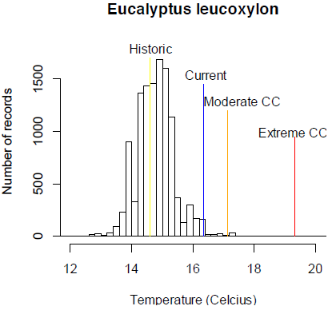Climate Change & Trees
As temperatures rise and weather patterns become more extreme, our trees are facing growing challenges. Climate change brings prolonged droughts, intense heatwaves, and unpredictable storms, all of which put stress on trees in our streets, parks, and natural landscapes. Increased temperatures can weaken trees, making them more vulnerable to pests, diseases, and declining health.
Healthy trees play a vital role in cooling our cities, improving air quality, and providing essential habitats for wildlife. However, without proper care and planning, many species may struggle to survive in a changing climate. Understanding these risks is the first step towards protecting and strengthening our urban and natural forests for future generations.
Research from Dave Kendal (The City of Melbourne's Future Urban Forest) assessed the impact of climate change on the City of Melbourne’s existing tree population. Although this research is calibrated to the City of Melbourne’s local climate, it has proved useful in the planning and long-term management of the Hobsons Bay urban forest.
The research found that some of our more commonly planted species will become increasingly vulnerable to the changing climate. Eucalyptus leucoxylon (Yellow Gum) for example is one of our most planted tree species. The research by Kendall suggests that this species will unfortunately become increasingly more vulnerable to the rising mean annual temperature. Particularly within the built environment, where temperatures tend to be warmer due to the urban heat island effect.
The graph below is an extract from the study, which displays the lack of Eucalyptus leucoxylon existing in areas that have a mean annual temperature greater than 16 °C. This research suggests that as the mean annual temperature rises beyond what the species is naturally found in, that species will become less suited to the environment and may require additional resources to manage.

Excerpt from The City of Melbourne’s Future Urban Forest; Identifying vulnerability to future temperatures (Kendal, 2006)